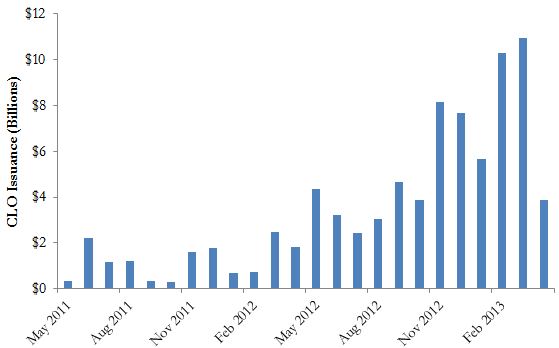
Sep 2013
The new proposal introduces an alternative to this form of risk retention for CLOs. It would allow a deal to tick the skin-in-the-game box if the arranger of each loan in the CLO retains a 5% stake in that loan. However, in a note published yesterday RBS researchers say this is not a viable option for CLOs. "Loan arranging banks do not typically retain any portion of the leveraged term loan tranches bought by CLOs," says the note. "Rather, they participate in the revolver or create a separate tranche to retain."
